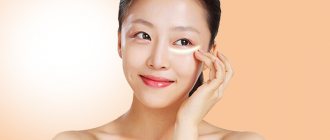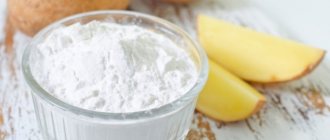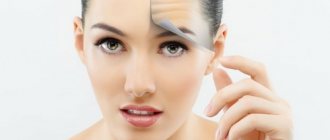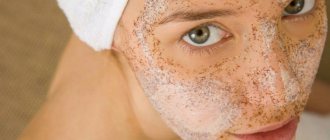One of the current popular rejuvenation procedures is peeling around the eyes. A certain part of girls and women resort to self-care for the skin around the eyes using massage or advertised creams, gels, capsules, serums, etc. But the massage must be performed correctly, and all cosmetics must be selected in accordance with age, skin type, and the nature of aging. It is better to contact a specialist with such questions.
Age is read by others from a person’s face. And it is precisely this that is subjected to various cosmetic procedures. First of all, the most delicate skin of the area around the eyes is affected by age. In the period from 20 to 25 years, the first wrinkles appear, which are called “facial wrinkles”. They are almost invisible in a relaxed state of the facial muscles. At 30 they become deeper. And at 35-40 they are clearly visible even with relaxed muscles. At 50 and older, wrinkles become especially deep, and drooping “bags” appear under the eyes. There is no escape from this, but it is quite possible that it can be delayed over time.
Types of peeling around the eyes
Exfoliating procedures, or peeling, will have a noticeable, desired effect of improving skin condition. Cosmetologists use a huge number of types of peelings. All of them are classified:
- by the depth of impact on the skin;
- according to the active substance;
- by method of influence.
Deep and medium peeling is not used for the skin in the area around the eyes. All procedures of this kind thin the stratum corneum of the skin, and since the skin in the area around the eyes is thin by nature, it is permissible to use only superficial exfoliation.
One type of peeling that is often used for the area around the eyes is chemical peeling. It can be based on retinoic or glycolic acid. Retinoic peeling around the skin of the eyes and eyelids is especially recommended by cosmetologists for anyone who wants to rejuvenate the epidermis in these areas of the face.
Regarding this type of cosmetic procedures, the same question very often arises: “Is it possible to do chemical peeling of the skin around the eyes?” The answer is clear - yes! It is recommended to treat the skin around the eyes with chemical solutions only under the supervision of a cosmetologist-dermatologist.
At home, using chemical peels on your own for the area around the eyes can be dangerous to your health. In fact, this procedure is used not only for the area around the eyes, but for the entire face and neck. It helps prevent the effect of “glasses” or “mask”, and a superficial procedure can also be used as a preparatory step.
What cosmetologists say
Cosmetologists speak quite positively about this procedure, since it helps to increase the level of skin moisture, eliminates fine wrinkles and so-called “crow’s feet”. An excellent result is noticeable if, after peeling, you apply a toning mask or cream to your face.
With its help, dead cells of the upper layer of skin are removed. The process of opening and cleansing the pores takes place, into which beneficial vitamins and minerals, which are part of the cosmetic products used after the procedure, penetrate. Pigment spots disappear, but after this procedure you should take special care of your face, protect it from direct sunlight, and also use sunscreen daily.
Most Popular: What is the difference between facial toner and lotion
The procedure can be applied at any age. Not recommended for children only. Until wrinkles appear on the face, peeling is used as a preventive measure. Later - for a restorative effect.
This procedure also differs in the seasonality of its application. It is best if this is the period from autumn to spring, when there is no active influence of sunlight. The effect is noticeable after the first time, but for maximum results you should undergo and then repeat the course of procedures. The length of the course is determined by the cosmetologist individually for each client.
Types of peeling
As you know, there are three types of peeling. They differ in the depth of the “chemical burn”. The deeper the damage, the longer the rehabilitation, but the result is more noticeable.
When working with the skin of the eyelids, special care must be taken - not only because of the natural characteristics of this area, but also because of its proximity to the mucous membrane of the eye.
Usually a course of superficial peeling is prescribed, giving preference to the mildest acids: mandelic and lactic. In some cases, more aggressive acids are used: glycolic, retinoic (the so-called “yellow peel”) and trichloroacetic.
Gentle acids are used to renew the skin of the eyelids © Getty Images
Tips and reviews from cosmetologists
Elena Eliseeva, medical expert at Vichy: “During peeling, they try not to go into the moving eyelid: the layer of skin covering the eyeball is very thin. In addition, the risk of introducing the composition onto the mucous membrane is too great.”
Mechanical peeling is not used for eyelids, even in the form of soft gommage. Use chemical compounds or laser. Laser peeling (especially fractional) is considered the most gentle.”
Peeling process in the eye area
Before peeling, the skin around the eyes is cleaned using cosmetics. The fatty layer is removed and the acidity level is restored to normal. Then the dark circle remedy is applied and left for a while.
First, apply the product with light movements to the upper eyelid of the eye, approaching the upper edge. The eyes must be closed during this procedure. Then, using semicircular movements, moving towards the inner edge of the eyelid, you need to smoothly move to the lower part. Under no circumstances should you touch the lacrimal gland.
After the entire process, a mask or moisturizer is applied to the treated areas. This is necessary in order to avoid irritability and enhance the effect of the procedure.
After peeling, wrinkles under the eyes will become less noticeable, the skin color will improve, it will become more toned and youthful. But there are times when the chemical option cannot cope with its task, no matter how many procedures the person has undergone. The reason for this is that the skin of the eyelids is already significantly sagging, since the fatty tissue under the eyes has shifted or become thinner. Such problems can only be eliminated through surgery.
Contraindications for peeling
The procedure is contraindicated:
- during the period of bearing a child;
- during lactation;
- when there is an exacerbation of herpes;
- when wounds or other damage to the skin are present;
- an increase in body temperature is observed.
Peeling can easily be considered one of the highest quality procedures that help slow down skin aging. After completing this procedure, you will get a positive result and will be completely satisfied with your refreshed skin.
But this does not mean that you did the procedure and then forgot about your face for a long period. The result must be maintained regularly; this can be easily done even at home. An excellent option would be natural homemade masks, which are very easy to prepare, quick and also quite affordable. And then you will preserve your beauty, youth and attractiveness for many years.
Indications and contraindications
All cosmetic procedures, both salon and home, have their own indications for use. You cannot, without any apparent reason, go and do a deep cleansing of the pores with clean and well-groomed skin or use lifting masks at the age of 20, when there should be no talk of any facelift. Home peeling is no exception to this general rule. It will be most effective if you follow the indications for it:
- Oily skin with enlarged pores , which need careful, regular cleaning, since they most often collect a lot of very harmful substances, dead cells, sebaceous deposits and other contaminants that interfere with the proper respiration of cells;
- Withered, flabby, dull skin : women who have stopped expecting dramatic changes (real miracles) from their reflection in the mirror can finally console themselves that peeling is the very procedure that can put their skin in order.
Since peeling masks are embedded into the very structure of the skin cells and have a deep and sometimes aggressive effect, be sure to keep in mind that home peeling has a number of contraindications:
- Problematic skin : with severe inflammation, when there are too many pimples and blackheads, it is better not to do peeling, because the source of inflammation will be affected and disturbed - the formations may intensify; however, with a limited number of rashes, you can occasionally seek help from home peeling, as it eliminates those impurities that cause the appearance of inflammatory lesions on the face;
- Skin diseases (rosacea, rosacea, acne, papillomas, melanoma, impetigo, vitiligo , keratosis, seborrheic dermatitis, chloasma, etc.);
- Skin damage : open wounds on the face, recent injuries that have not yet healed, fresh marks from stitches;
- Thin, delicate, sensitive skin : for such beauties, peeling cleansing is available, but limited in the number of procedures - it is not prohibited to do it once (in special cases, twice) once every 10 days, but choose exclusively gommage, so as not to injure the skin.
Attention: if you are not sure that you can do homemade facial peeling, it is better to avoid the procedure in favor of soft masks and daily washes.
If the degree of contamination of the pores is very high, it’s time to go to a salon, where they can offer various types of salon peelings, even for sensitive and problematic skin. For those who have no contraindications, there are many recipes for homemade peeling products that are ready to carefully and effectively cleanse pores and refresh the complexion.
Indications for use
The main indications for the procedure include:
- pigmentation on the face that has spread under the eyes and created dark circles;
- fine wrinkles due to age-related changes;
- blue circles under the eyes;
- swelling of the eyelids and bags under the eyes;
- preparing the face for contouring or surgery.
Most popular: 12 ways to get rid of female mustaches forever
After the procedure, the level of skin moisture will increase by cleansing the upper layers of the epidermis. Thus, creams and masks will penetrate much deeper than before cleansing. Pigment spots are eliminated. But you need to be very careful with skin pigmentation, as it tends to return and increase. A complex of peelings, masks, creams and massages will practically remove all puffiness and blueness under the eyes.
But still, there are situations when peeling cannot change anything. Peeling is powerless when there is sagging of the eyelid, both upper and lower, and the fatty tissue under the eyes becomes thinner or shifts. This problem can only be solved with the help of surgery, but even in this case, glycolic peeling is taken as the basis of the procedure.
The following procedures are prohibited
- Facial cleansing using gommage. The technique itself involves intensive rubbing of the skin. This promotes the appearance of new wrinkles much faster than using scrubs.
- Scrubbing. Mechanical intense friction strengthens existing wrinkles and actively affects the appearance of new ones. Abrasive particles, when rubbing against the skin, no matter what size they are, will irritate the upper layers of the skin and cause irritation.
- Peeling, which contains highly concentrated acids. Products with this composition cause burns on the skin, after which it will never recover.
Which peeling to choose and how often should it be done?
The effect of peeling on tired, aging skin
In order to correctly perform the procedure and not harm the skin, you should first of all decide on the method of cleansing (chemical, mechanical). Then you need to find out which product to use, homemade or purchased, and how often you can exfoliate your face.
For problem skin, scrub or gommage can be used daily, but inflamed areas should be avoided.
For those with dry facial skin aged 20-30 years, it is recommended to perform gommage once a week. Soft peeling should be performed once a week, for a course of up to 6 procedures. For this skin type, mandelic and glycolic acids are used to help maintain hydration.
Mature, oily skin needs cleansing quite often (2-3 times a week). For dry and thin skin, gommage is not recommended.
For dull, oily facial skin with enlarged pores, mechanical exfoliation can be carried out daily, periodically - chemical peeling using mild aggressive agents. The main thing is not to forget about hydration.
For normal skin type, you can use any soft peelings or age-related products. Frequency – 2 times a week.
Before carrying out any peeling procedure, you should conduct a test on the elbow bend for susceptibility to the components of the composition.










